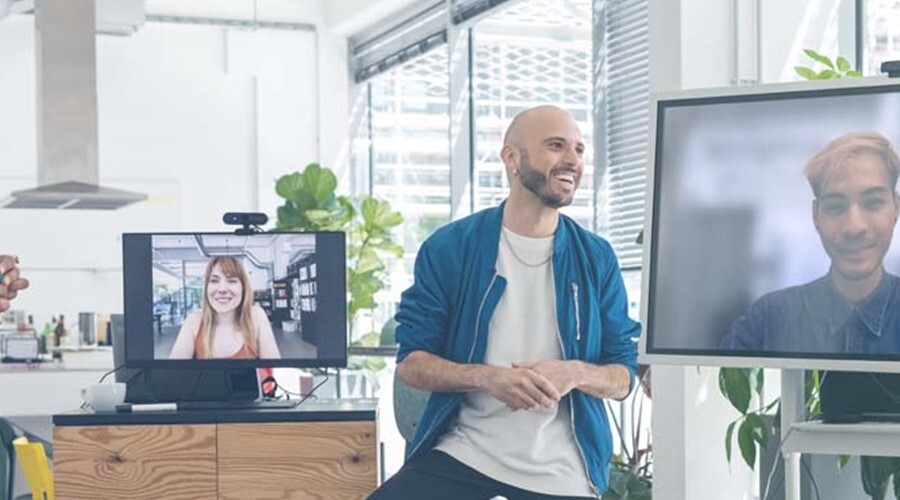As more companies are welcoming employees back into the office, they are faced with a range of reactions – excitement about finally being able to interact in person with colleagues, eagerness for a change of pace, apprehension about juggling schedules, and worry about long commutes.
While the sudden shift home for many employees in 2020 could not be planned in advance, the return to the office is one that can be more planful – and many companies have developed comprehensive plans to support returning employees.
By now, many organizations have designed and communicated guidelines across the range of all-remote to all in-person. Communicating a policy, celebrating the return to the office, and then leaving it up to individual teams to figure it out is not a recipe for success. Especially in the tightest talent market in years, organizations need to make sure they aren’t driving their best talent away. Instead, they need a comprehensive plan to recharge their talent as they return to the office.
Establishing the playbook for your team in the hybrid environment
Leaders have a window of opportunity as teams are transitioning into a new working model to be intentional about setting expectations and boundaries that will shape how people engage with each other. Start by reminding the team about why their work is important and then enable the team to define how they will work to achieve shared goals regardless of whether they are in-person, all-remote or hybrid.
Establishing and reinforcing the “why”
Individuals have an inherent desire to find meaning in their day-to-day work. But the pandemic years have made many employees focus on surviving through the turmoil and uncertainty rather than focus on the “why” of their work. Now that a new normal is on the horizon, what better time to regain that clarity by helping employees connect the dots between their role and its contribution to the broader goals of the organization.
Invite a customer to share how the work of the team made a positive difference in their life. One of our clients, a greeting card company, showed a video of family members reading a greeting card from a loved one and sharing why it was meaningful to them. It was a beautiful reminder of how meaningful the client’s work can be.
Finding the happy place between team and individual needs
Worker flexibility is no longer a privilege, but an expectation. While work/life integration is now a fact, not every employee is skilled in having constructive conversations about how to articulate their individual needs, and not every manager has pivoted towards an accountability mindset.
Speak openly about how you synchronize different elements of your personal and professional life and invite others to do the same. Make sure coordination, sharing and collaboration occur, but also be flexible regarding requirements that work must be done in a certain time and place. Rather than gauging performance based on observed activity, focus on outcomes.
Aligning on team norms
Often, teams are expected to just start working. But differing expectations about when and how people show up can lead to misunderstandings and frustration. Decisions that are seemingly mundane – like when to turn on your camera, or how to make sure someone who is joining remotely can be included in an in-person conversation, or how to remind someone that they are on mute – can have a significant impact on individual perceptions and team dynamics.
Facilitate team norms discussions where team members discuss how inequities can emerge in a hybrid setting, share individual work preferences and jointly create a set of shared norms. Then make sure you uphold or adjust these norms over time. This will enable a more trusting and positive microenvironment.
Defining mutual support mechanisms
We are hearing repeatedly that our workforce is feeling burnt out. Month after month of taking on more, adjusting to new realities and simply surviving has taken a toll on people. But employees are still hesitant to ask for help even when they need it the most.
Incorporate elements related to mutual support in your norms by creating a channel to express when an employee is approaching their limit with a commitment from other team members to support them through those moments in good faith.
Add creativity and authenticity to the experience
To break through the noise of corporate messaging, flipping the script on what voices to feature could be a great way to build connectivity and enhance experiences. There is no better time to do it when you are transitioning to a new working model.
For those who are back in person, create a “wall of stories” where employees can share stories and photos about how their organizational purpose was reflected in something they did. We’ve had clients who had a physical wall at the entryway of their manufacturing facility or work site, but this can just as easily be done in virtual space — an internal website or an application like Microsoft Whiteboard, Google Jamboard, or Miro. Team chats, used to celebrate milestones, achievements and share tips can also be a powerful virtual water cooler.
As we re-enter the in-person world or venture into a new era of hybrid work, companies have a unique opportunity to reset how they do things and enable their teams to be better than ever.
Right Management has been helping organizations evaluate, develop, mobilize and transition their talent for over 40 years. Let us help you develop your own plan to thrive in the new next.

